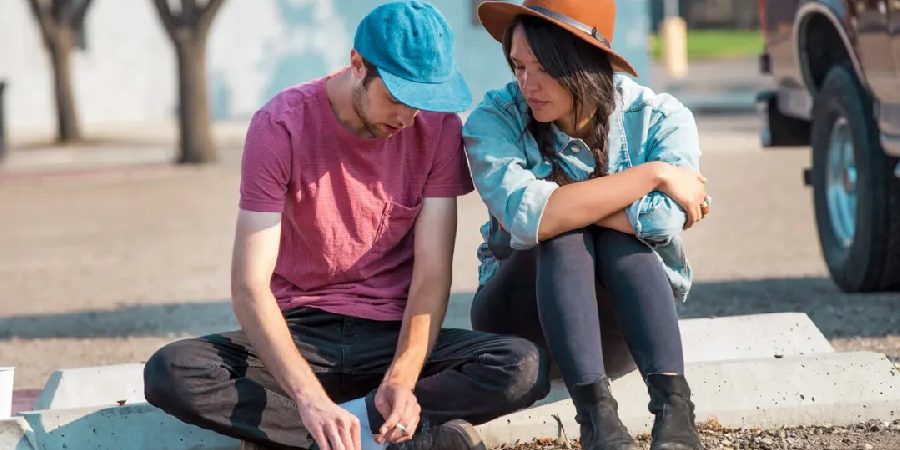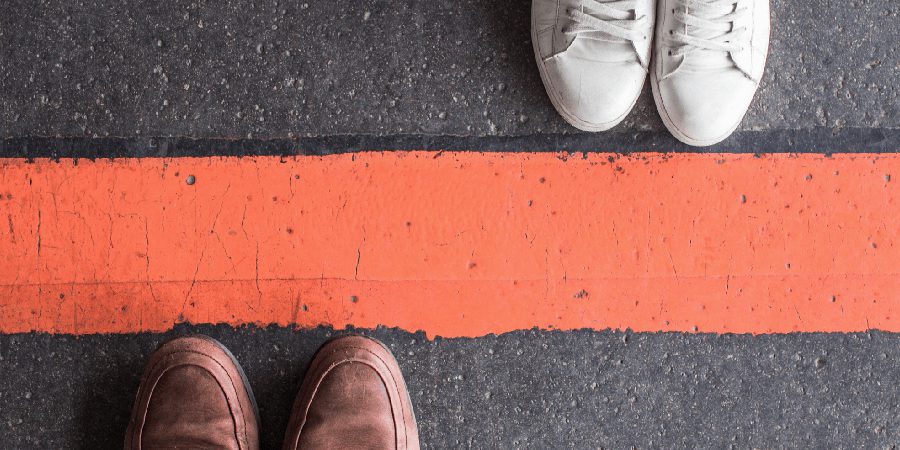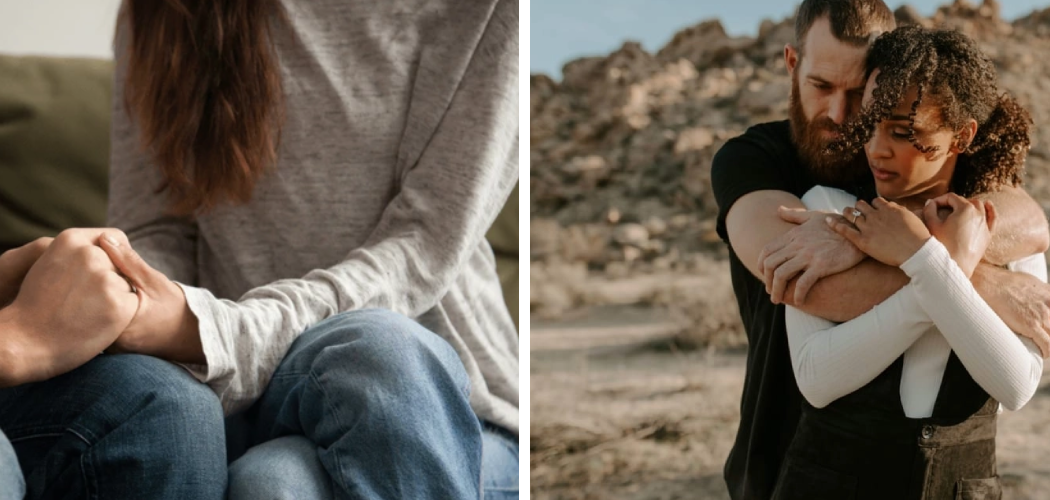Getting out of a toxic relationship can seem scary, but you can take back your life and find real happiness. This guide will show you how to leave a toxic relationship and start a healing journey. You’ll learn about self-discovery and growth.

First, you need to know the signs of emotional abuse and narcissistic behaviors. We’ll explain how trauma bonding and codependency work. This knowledge will help you understand the relationship better.
Your safety is the most important thing. We’ll teach you how to make a safety plan and find a strong support system. We’ll also help you find the courage to leave, even when it’s hard.
- Recognizing the Signs of a Toxic Relationship
- Understanding Trauma Bonding and Codependency
- Prioritizing Your Safety and Well-being
- Overcoming the Fear of Leaving
- Tricks by How to Leave a Toxic Relationship
- Setting Boundaries and Enforcing Them
- Navigating the Practical Aspects of Separation
- Healing from Emotional Trauma
- Rebuilding Your Life and Regaining Confidence
- Avoiding Future Toxic Relationships
- Frequently Asked Questions
Recognizing the Signs of a Toxic Relationship
A dark, shadowy figure looming over a small, isolated person sitting alone in a dimly lit room, highlighting a sense of fear and vulnerability, with an oppressive atmosphere and distorted shadows representing emotional turmoil.
Unhealthy relationships can be hard to spot because they are complex and deeply rooted. We will look at emotional abuse, manipulation, and narcissistic behaviors that show a toxic partnership.
Emotional Abuse and Manipulation Patterns
Emotional abuse often involves gaslighting, where your partner makes you doubt your own reality. They might constantly criticize you or make you feel small. This can hurt your self-esteem and make you question your worth.
Also, watch for emotional neglect and attempts to cut you off from friends and family. These are signs of manipulation.
Narcissistic Behaviors and Lack of Empathy
Narcissistic partners usually don’t care about your feelings. They might seem charming at first but show their true self by ignoring your emotional needs. They also don’t take responsibility for their actions.

Spotting these narcissistic traits is key to understanding the unhealthy dynamics in your relationship.
“The biggest indicator of a toxic relationship is the feeling that you can’t be yourself.”
Knowing the signs of emotional abuse, manipulation, and narcissism is the first step to leaving a toxic relationship. By recognizing these patterns, you can start to take back control of your life and well-being.
Understanding Trauma Bonding and Codependency
A pair of intertwined chains, one broken and rusted, while the other glimmers in sunlight, surrounded by shadows of thorns and dark clouds, symbolizing entrapment and struggle, with a soft light breaking through the darkness, suggesting hope and the possibility of freedom.
Leaving a toxic relationship is hard, with many emotional and psychological hurdles. Trauma bonding and codependency are two big reasons why it’s tough.
Trauma bonding forms between an abuser and their victim, even with clear abuse. It comes from the mix of positive and negative actions, making a strong emotional tie. Victims might stay in the relationship, even knowing it’s harmful.
Codependency makes someone’s happiness and self-worth depend on the relationship. People in codependent relationships often ignore their own needs to keep the relationship going, even if it’s bad for them.
Knowing about trauma bonding and codependency helps you understand unhealthy patterns. This knowledge is the first step to taking back control of your life.
“The chains of trauma bonding and codependency can feel unbreakable, but with the right support and determination, you can free yourself and build a healthier future.”
You’re not alone in this fight. Many have overcome trauma bonding and codependency before. Start your journey to freedom today.
Prioritizing Your Safety and Well-being
Starting to leave a toxic relationship means focusing on your safety and well-being. It’s important to make a safety plan and build a strong support system. These steps help you through the tough times ahead.
Creating a Safety Plan
Making a safety plan is key to keeping you safe. It should cover how to keep your documents safe, find a secure place to stay, and have emergency contacts ready. Don’t forget to think about keeping your kids safe and limiting your abuser’s access to your info.
Building a Support System
Having trusted people around you is crucial. Talk to friends, family, or experts like domestic violence advocates. They can offer emotional, practical, and legal help. This support helps you deal with your feelings, find ways to cope, and handle the practical steps of leaving.

Remember, your safety and well-being are the most important things. With a solid safety plan and a strong support system, you can face the challenges ahead. You’ll work towards gaining your freedom and independence.
“Your safety is our top concern. We’re here to support you every step of the way.”
Overcoming the Fear of Leaving
Leaving a toxic relationship is scary because of the unknown and emotional ties. We’ll look at common fears and how to get past them. Understanding the mind games and making a plan will help you break free.
The fear of leaving comes from emotional abuse, trauma bonding, and codependency. Survivors feel trapped and unsure about their future. But, remember, you deserve a life free from pain.
Recognizing emotional abuse patterns is key. Gaslighting, manipulation, and control hurt your self-esteem. Trauma bonding makes leaving harder. It’s important to understand these to move forward.
- Acknowledge and validate your feelings of fear and uncertainty.
- Develop a strong support system of friends, family, or a therapist who can provide emotional and practical assistance.
- Create a detailed safety plan, including a secure place to stay and a reliable means of transportation.
- Educate yourself on the resources and organizations available to help survivors of toxic relationships and emotional abuse.
Your safety and well-being are most important. Overcoming fear means reclaiming your life. You’re on the path to a brighter, healthier future.
“The greatest weapon against fear is self-empowerment. When you feel powerless, you become afraid. But when you feel empowered, you become fearless.”
Tricks by How to Leave a Toxic Relationship
Leaving a toxic relationship is tough, but it’s key for your growth and health. You might face emotional abuse, manipulation, or a lack of empathy. We’ll show you how to leave a toxic relationship safely and effectively.
First, make a safety plan. Find a safe place to stay, like with friends or family. Also, collect important documents like ID, financial records, and abuse evidence. Keep them in a safe spot for a smooth transition.
Then, build a strong support system. Talk to people you trust who can help emotionally and practically. They can listen, help with plans, or be with you when you leave. You’re not alone in this.
- Develop a safety plan to secure your physical and emotional well-being.
- Reach out to trusted friends, family, or support services for assistance.
- Gather important documents and belongings in a safe, accessible location.
- Communicate your decision to leave the relationship firmly and clearly.
- Be prepared for potential retaliation or attempts to manipulate you to stay.
- Prioritize your safety and well-being above all else.

Leaving a toxic relationship is hard, but it’s a step towards freedom and healing. By taking these steps, you can get out of a bad relationship and start a new journey of self-discovery.
Setting Boundaries and Enforcing Them
Leaving a toxic relationship is tough, but setting boundaries is key for your health. When you tell your partner you’re leaving, be firm and clear. This shows you’re serious about taking care of yourself.
It’s vital to set clear boundaries to stop emotional abuse and narcissistic behaviors. Be specific about what you will and won’t accept. Make it clear that crossing those lines won’t be okay.
Communicating Your Decision Firmly
Tell your partner you’re leaving calmly but firmly. Don’t get into arguments or let them manipulate you. Stay firm and make it clear it’s a final decision. You might need to say it more than once, but keep standing up for yourself.
- Communicate your decision clearly and directly.
- Avoid getting drawn into arguments or engaging with manipulation.
- Repeat your stance firmly, if necessary.
Keeping these boundaries can be hard, especially if your partner tries to guilt trip you or threatens harm. Remember, your safety and emotional health are most important. Get support from friends, family, or a therapist to help you stay strong.
“Boundaries are a sign of self-respect. When you allow people to cross your boundaries, you’re telling them that your needs don’t matter.”
Navigating the Practical Aspects of Separation
Leaving a toxic relationship comes with many challenges. You’ll face legal issues and need to secure your financial future. But, with the right help, you can overcome these hurdles and start anew.
Legal Considerations
First, you need to understand the legal side of things. This includes knowing your rights and possibly filing for divorce or a restraining order. It’s key to work with a good lawyer to protect your rights.
Financial Independence
Getting financially independent is crucial. This means opening your own bank account and finding a steady job. You’ll also need to sort out any shared money matters with a financial advisor’s help.
Practical Separation Steps
Separating from your partner can be tough. But, with a solid plan, you can do it safely. Here are some steps:

- Find a new place to live, whether it’s with friends, family, or on your own.
- Change locks, passwords, and other security to keep your info and safety secure.
- Slowly take your things from the shared home to avoid fights.
- Tell your close friends and family about your decision and your plan.
Your safety is the most important thing during this time. Get help from experts and people you trust to make the transition smoother and safer.
Healing from Emotional Trauma
Leaving a toxic relationship can be very hard and hurtful. It’s important to focus on healing your emotions. Getting help and taking care of yourself can help you recover and feel better.
Seeking Professional Help
Talking to a therapist or joining a support group can really help. They offer a safe place to talk about your feelings and find ways to heal. Remember, getting help is important for your well-being.
Practicing Self-Care and Self-Compassion
Along with professional help, taking care of yourself is key. This can include:
- Doing mindfulness exercises or meditation to find peace
- Taking care of your body with good food, exercise, and sleep
- Trying creative activities like journaling or art to express your feelings
- Being around supportive friends and family who listen and encourage you
Healing from emotional trauma takes time and patience. Be gentle with yourself and keep moving forward. With self-care and support, you can grow stronger and more resilient.
“The journey of healing is not a straight line, but a winding path. Be gentle with yourself, and trust the process.”
Rebuilding Your Life and Regaining Confidence
Leaving a toxic relationship is a big step. Now, it’s time to rebuild your life and regain confidence. This journey can be both empowering and challenging. But with the right strategies, you can take back your power and look forward to a brighter future.
Rediscovering yourself is a crucial step. Spend time reconnecting with your values, interests, and passions. Do things that make you happy, like hobbies, volunteering, or exploring new careers. This will help you rebuild your self-esteem and confidence.
Setting achievable goals is also important. Break down big goals into smaller steps. Celebrate your progress. This keeps you motivated and gives you a sense of accomplishment.
Remember to be patient and kind to yourself as you heal. Healing from a toxic relationship takes time. Seek support from friends, family, or a therapist to help you move forward.
By focusing on self-empowerment and growth, you can reclaim your power. The journey may be tough, but with determination and resilience, you can rebuild your life and come out stronger.
Avoiding Future Toxic Relationships
After a toxic relationship, it’s key to learn how to avoid similar unhealthy patterns. By being self-aware and spotting relationship red flags, you can build healthy connections. These connections will support your well-being in the long run.
It’s important to know the warning signs of a toxic relationship. Look out for signs like excessive jealousy, constant criticism, or disrespect of your boundaries. Being aware of these signs helps you make better choices about who you let into your life.

It’s also crucial to focus on building healthy relationship patterns. Work on improving your communication, listening actively, and building mutual respect and trust. By doing this, you’ll be more likely to create fulfilling and supportive relationships.
Improving your self-awareness is another powerful step. Take time to think about your values, boundaries, and what you need in a relationship. This self-reflection helps you choose partners who fit your desired relationship dynamics.
“The best way to predict the future is to create it.” – Peter Drucker
By using these strategies, you’re on the path to a future filled with healthy relationships. Remember, your well-being is worth the effort. With the right mindset and tools, you can break free from toxic relationships for good.
- Recognize relationship red flags to avoid entering into toxic patterns.
- Cultivate healthy relationship patterns based on communication, respect, and trust.
- Enhance your self-awareness to make informed choices about the people you allow into your life.
Frequently Asked Questions
What are the signs of a toxic relationship?
Signs of a toxic relationship include emotional abuse and manipulation. Narcissistic behaviors and a lack of empathy are also common. Look out for gaslighting, constant criticism, and disregard for your well-being.
How do trauma bonding and codependency keep me trapped in a toxic relationship?
Trauma bonding and codependency make it hard to leave a toxic relationship. Trauma bonding creates a strong emotional tie. Codependency makes you rely too much on the relationship. Understanding these can help you break free.
What steps should I take to prioritize my safety and well-being when leaving?
Your safety is key when leaving a toxic relationship. Create a safety plan to protect yourself and your loved ones. Building a strong support system is also crucial for your well-being.
How can I overcome the fear of leaving a toxic relationship?
Overcoming fear of leaving is tough, but doable. We’ll look at common fears and how to overcome them. Understanding the psychological factors and having a plan will empower you.
What are the practical steps I can take to safely and effectively leave a toxic relationship?
We’ll outline steps to leave safely and effectively. This includes preparing to leave, communicating your decision, and physically removing yourself. Follow these steps to start healing and empower yourself.
How do I set and enforce boundaries after leaving a toxic relationship?

Setting and enforcing boundaries is key after leaving. We’ll guide you on how to communicate your decision and maintain boundaries. Being confident and assertive is crucial for success.
What are the important practical and legal considerations when separating from a toxic partner?
Separating involves many practical and legal challenges. We’ll cover legal matters, financial independence, and physical separation. We’ll offer strategies to address these concerns safely and efficiently.
How can I heal from the emotional trauma of leaving a toxic relationship?
Healing from emotional trauma is crucial. We’ll discuss the importance of professional help, like therapy or support groups. Self-care and self-compassion are also essential for your recovery.
How can I rebuild my life and regain my confidence after leaving a toxic relationship?
Rebuilding your life and confidence is a journey. We’ll share strategies to rediscover yourself, set goals, and live independently. Focus on self-empowerment and personal growth to reclaim your power.
How can I avoid entering into toxic relationships in the future?
Learning to avoid toxic relationships is vital. We’ll guide you on recognizing red flags and developing healthy patterns. Cultivating self-awareness will help you make better choices and build meaningful connections.




